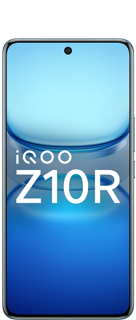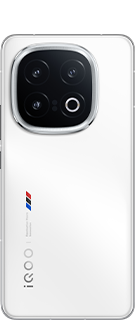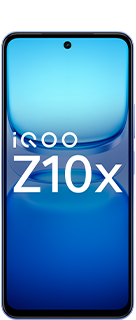🏁F1 Unlocked | Decoding the Colours: Flags in F1 | Ep 2🏎️
Welcome Back Questers Welcome to 2nd Episode of F1 Unlocked This your Host Shaw, If you've ever watched a Formula 1 race and found yourself puzzled by the flurry of colorful flags being waved trackside, you're not alone. These flags may seem like mere decorations to the untrained eye, but in reality, they are a vital component of the racing experience.
In this thread, we'll take a deep dive into the world of F1 flags, unraveling their meanings and shedding light on their crucial role in ensuring the safety and fairness of races. Whether you're a newcomer to the sport or a seasoned enthusiast looking to brush up on your knowledge, join us as we explore the significance of each flag and learn to decode them like a pro driver. Let's dive in! 🏁
The Chequered Flag: Symbol of Victory
The chequered flag is perhaps the most iconic in Formula 1 and the wider motorsport world, synonymous with triumph. Waving at the finish line on the final lap, it signals the end of the race and the first driver to pass the chequered flag is the winner.

The use of this flag dates back to the early days of racing and, to this day, remains a timeless symbol of victory and completion. However, each driver will pass the chequered flag as they complete their race, no matter if they finish in first or last place. Chequered flags aren't exclusive to the last lap of a race, either, and they appear at the end of each Free Practice or Qualifying session to inform the drivers that the session is complete.
The Yellow Flag: Caution on the Track
The yellow flag is all about caution. It's shown when there's a hazard on or near the track, such as an accident, debris, or a stopped car. Unlike most others, yellow flags can come in two varieties: single-waved or double-waved, i.e. a flag waved in one hand or two flags waved with both.

Single-waved yellow flags mean the drivers must slow down and potentially change their course to avoid a hazard. Double-waved yellows indicate a significant hazard, and drivers must be ready to stop if necessary. No matter whether it's single or double-waved, the rules strictly prohibit overtaking under yellow flag conditions to ensure the safety of everyone involved.
The Green Flag: All Clear
The green flag signals that the track is clear of hazards and that drivers are free to race at full speed. When the green flag waves on the track in a section after seeing yellow flags, it tells drivers they have passed the incident and can resume racing.

Equally, they can also be a circuit-wide sign that normal racing conditions have started or resumed, be it the end of a safety car or at the start of a Free Practice or Qualifying session.
The Red Flag: The Signal to Stop
The red flag brings a grand prix to a halt without the drivers completing the race distance. They occur in extreme situations like severe weather, significant or dangerous accidents, or when the track is deemed unsafe for racing.

When the marshals show the red flag, drivers must slow down, stop racing and return to the pit lane at the end of their current lap. This flag prioritises safety to protect drivers, marshals, and fans in hazardous conditions. Depending on the reason for the red flag stoppage, the session might not resume, and the drivers will receive partial points in a race depending on how many laps they have completed.
The Blue Flag: Make Way for Faster Cars
In Formula 1, the marshals show a blue flag to a slower driver when a faster car is approaching behind them that they must move out of the way. When a driver is the recipient of a blue flag, they must allow the faster car behind to pass at the earliest safe opportunity. During a race, this will only apply when the approaching car is an entire lap or more ahead of the slower driver; should the faster car be on the same lap, they'll need to battle their way past!

Although blue flags are synonymous with drivers lapping their opponents, they also appear during Free Practice and Qualifying sessions to alert a slow car that an opponent is approaching on a fast lap.
( Note that although blue flag in-race rules are now a standard part of Formula 1 grands prix, not all racing series use blue flags with rules for a lapped car move aside.)
The Black and White Flag: Unsportsmanlike Behavior
The black-and-white flag warns a driver of their unsportsmanlike behaviour or minor infringements. It's akin to a yellow card in football, where there is no immediate impact to the recipient but tells them that their actions are under scrutiny, and further infractions could result in a penalty.

Dangerous driving, such as unsafely compromising other drivers, exceeding track limits, or other unsportsmanlike behaviour, might trigger the black-and-white flag.
Marshals will show the black-and-white flag alongside a board with the unsporting car's number to indicate which driver is at fault. Should a driver continue to drive in such a way after receiving a warning, they may receive a punishment, for example, a time penalty, a drive-through penalty, or a stop-and-go penalty.
The Black Flag: Disqualification
The black flag is a serious signal in F1, indicating disqualification.
As with the black-and-white flag, it's shown alongside the driver's car number, who must return to the pit lane and retire from the race. Seldom shown in Formula 1, stewards only use this flag for severe rule breaches like dangerous driving or, more likely, technical non-compliance with the rules

Juan Pablo Montoya had the ignominy of a black flag during the 2004 US GP when he switched to the spare FW26 after a failure during the formation lap, something the stewards eventually ruled illegal on Lap 56 of the 73-lap race
The Black and Orange Circle Flag: Car Condition Alert
Affectionately also known as the "meatball flag," a black flag with an orange disc in its centre is less commonly seen but crucial for safety. It indicates to a driver a mechanical problem with a car, such as a loose component or a leak.

The Yellow and Red Flag: Surface Conditions Warning
The red and yellow striped flag signals a change in track conditions that will reduce the on-circuit grip levels. Any change could be due to oil spills, water, or debris that has made the upcoming section of the track hazardous.

With Formula 1 tyres completely slick during dry-weather racing, any reduction in grip levels severely impacts the car's performance if rain or oil sits on the track surface. Unlike the solid yellow flag, the yellow-and-red flag does not necessitate slowing down and only advises drivers to prepare for potentially unpredictable and changing surface conditions.
The White Flag: Slow Vehicle Ahead
The white flag is another lesser-spotted type in Formula 1 and signals the presence of a much slower vehicle on the track ahead. Examples of slower cars might be other drivers preparing for a practice start or limping around the track with a mechanical fault.

They might also be a service vehicle, such as an ambulance or medical car en route to an incident. As with a yellow flag, drivers seeing the white flag should exercise caution and prepare to reduce their speed and change direction.
Lastly flags are integral to the sport of Formula One and understanding them takes you one step closer to true appreciation of the sport.
Do let me know if you have any doubt
Share your opinions in the comments down below
Have a great day, and I look forward to seeing you again soon.
Best regards,
Ayush Shaw
Community Moderator⭐
iQOO Connect
Please sign in
Login and share






















